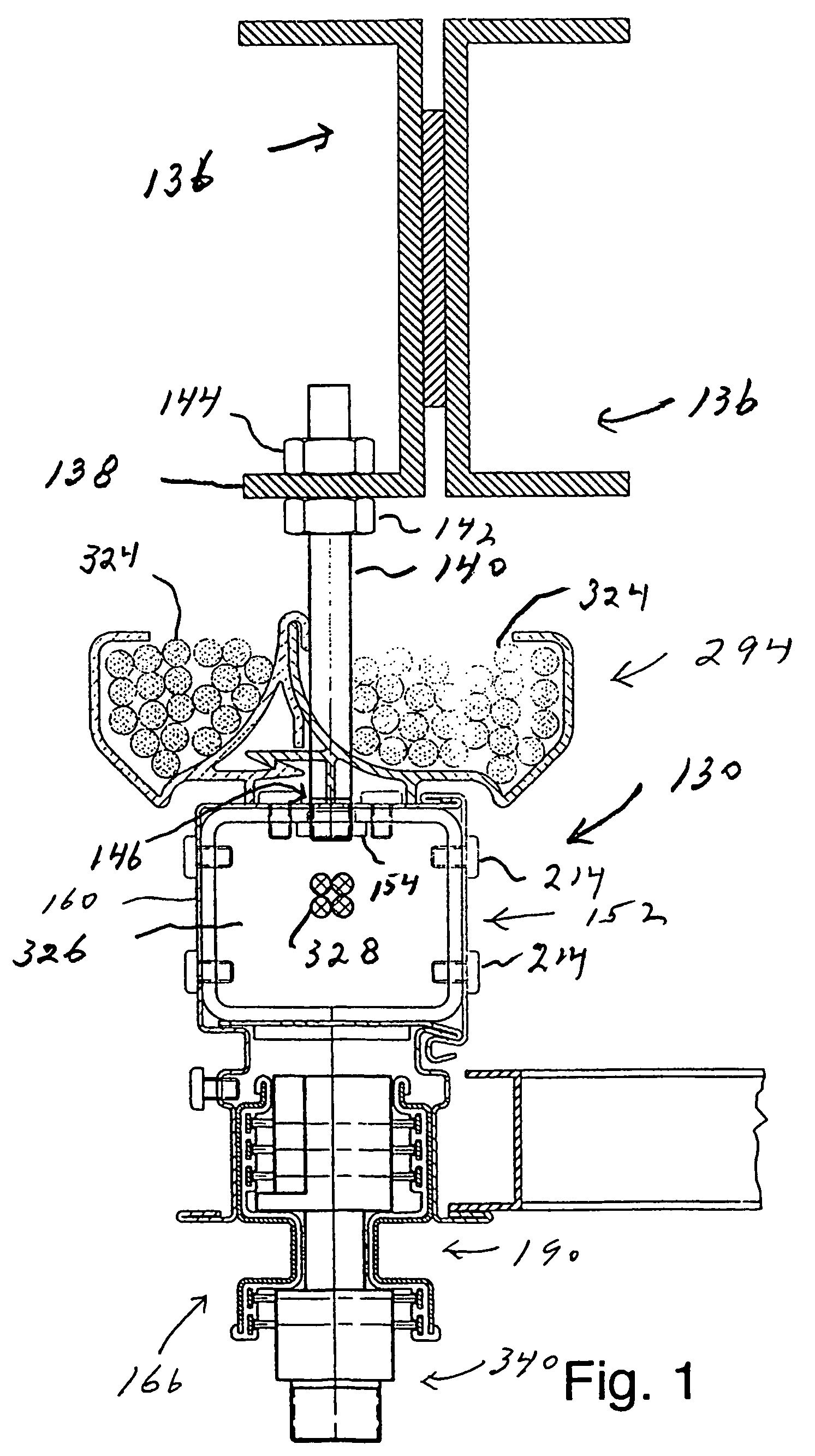Rail system
a rail system and rail technology, applied in the direction of electrical equipment, packaging, coupling device connections, etc., can solve the problems of difficult to achieve privacy for face-to-face or telephone conversations, meetings or other commercial interior activities, and commercial interiors that involve relatively “stationary” furniture, and do not necessarily lend themselves to rapid reconfiguration
- Summary
- Abstract
- Description
- Claims
- Application Information
AI Technical Summary
Benefits of technology
Problems solved by technology
Method used
Image
Examples
Embodiment Construction
[0062]The principles of the invention are disclosed, by way of example, within a rail system 100 illustrated in FIGS. 1-32. A general layout of the rail system 100 as used within a series of reconfigurable commercial interiors s is illustrated in FIG. 3. Structural layouts of the rail system employing certain of its principal components are also illustrated in FIGS. 14, 17, 21A, 26, 27, 28, 29 and 29A. The rail system 100 comprises an overhead structure providing significant advantages in environmental workspaces. As examples, the rail system 100 in accordance with the invention facilitates access to locations where a commercial interior designer may wish to locate various functional elements, including electrical power receptacles and the like. In addition, the rail system 100 facilitates flexibility and reconfiguration in the location of various functional elements which may be supported and mounted in a releasable and reconfigurable manner with the rail system. Still further, the...
PUM
 Login to View More
Login to View More Abstract
Description
Claims
Application Information
 Login to View More
Login to View More - R&D
- Intellectual Property
- Life Sciences
- Materials
- Tech Scout
- Unparalleled Data Quality
- Higher Quality Content
- 60% Fewer Hallucinations
Browse by: Latest US Patents, China's latest patents, Technical Efficacy Thesaurus, Application Domain, Technology Topic, Popular Technical Reports.
© 2025 PatSnap. All rights reserved.Legal|Privacy policy|Modern Slavery Act Transparency Statement|Sitemap|About US| Contact US: help@patsnap.com



